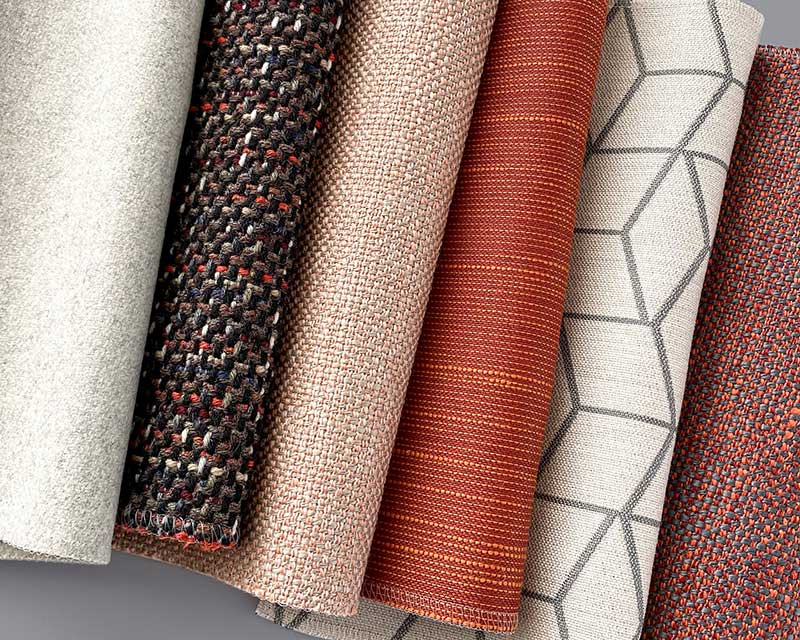
Weave – The Story of Textile Giant Sina Pearson
BY BRIAN G. THORNTON
SPINNING YARN
As a student of architecture and later interior design and now a professional in the field, I was thrilled about this assignment and even more excited to meet Ms. Pearson, albeit virtually. She is currently considered a design legend and leads a bespoke division of Momentum textiles. She is known for her high style, lively patterns, and complex textures.
For Sina, textile design balances inspiration with a deliberate yet organic process. Her approach holds reverence for letting every fabric “be what it wants to be” while she seeks to capture moments in time, drawing connections of even the most simple and obscure details. From the blurred view of a passing train to the fine structural details of an architectural façade, she uses real-world experiences to guide her design process.
Meet Sina Pearson.
WOVEN
In the 1950s, Sina Pearson grew up in Seattle, Washington. She spent summers at her family cabin north of the city and later built a vacation house nearby surrounded by 80 ft fir trees. She visits as frequently as possible. “I live in New York and love it, but Seattle will always be home.”
She was introduced to art very early on. Museum visits as a child influenced her career. “I remember my first museum visit was with my parents. They were interested in art themselves. My mother was a self-employed landscape designer, and her passion was gardening. My dad was an engineer at Boeing, but he was also a fine photographer. He had a dark room which was his passion. They not only loved going to museums themselves, but they had artist friends from whom they bought their art. So, you can see they were both highly visual people. I’m a combination of both my parents.”
Once, on a business trip to New York, her parents visited the Metropolitan Museum of Art, where they purchased in the gift shop a small Cycladic figure that resembles a [Constantin] Brancusi sculpture. “That was in our living room for 50 years, in a place of honor. It looked very modern, but it was also the most classic thing you could ever have, and now it is one of my most treasured inherited pieces from my parents.”
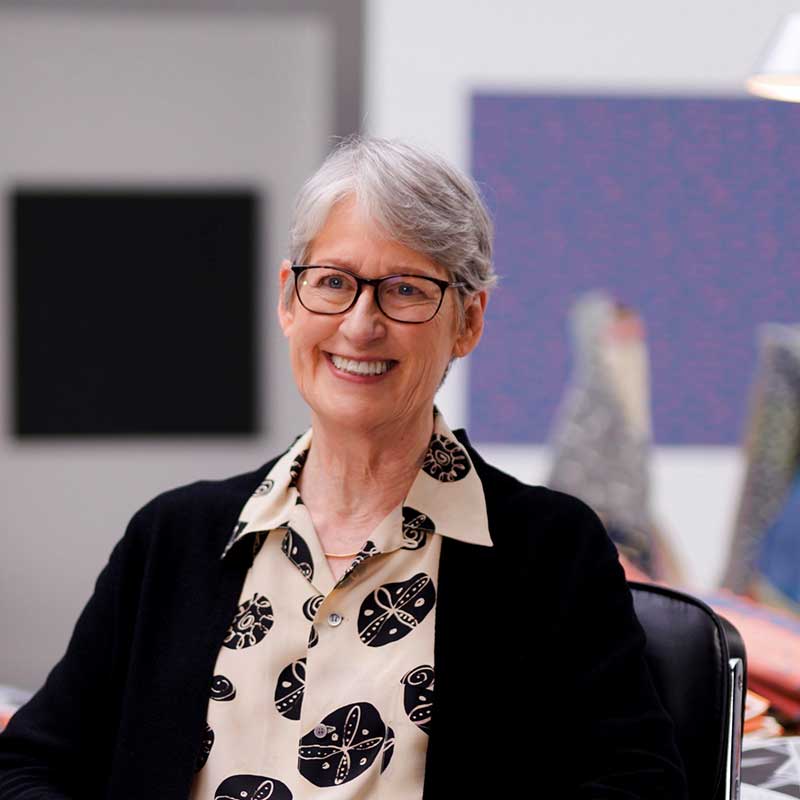
Sina Pearson
LOOMING CAREER
Asked when she decided she was going to pursue creating textiles as a profession, Sina answered, “I don’t think I ever decided I was going to be a ‘textile designer,’ but my mom used to say that when I was three years old, I would cut pieces of fabrics and pat them on our sofa. And even in high school or college, I never imagined being a textile designer in the contract industry. I just liked playing with fabric; it didn’t matter what it was. Fortunately, mentors, teachers, and supporters opened doors for me and said, ‘You should try this, or you should try that.'”
In the late sixties, Sina went to college at the University of Washington. “I began in the home economics department with a Textiles/Clothing major. I knew how to weave before college – that’s because when I was twelve, I took a summer class in art school and had a teacher who was a Swedish rug weaver. So, I knew about threading up looms and loved playing with the yarn and colors, but I moved to the Art department and changed my major to Art, which I was more drawn to. Along with classes in fine arts, I had a wonderful teacher who encouraged me to explore all textile processes.”
Approaching graduation in 1970, Sina was wondering what to do when her professor suggested that she get a Master’s degree in textiles at Cranbrook Academy of Art in Bloomfield Hills, Michigan. “I had never even heard of Cranbrook. But it was one of the most important experiences I have had in my life. We each had our own studio and two years to explore with fiber/textiles what interested us most.”
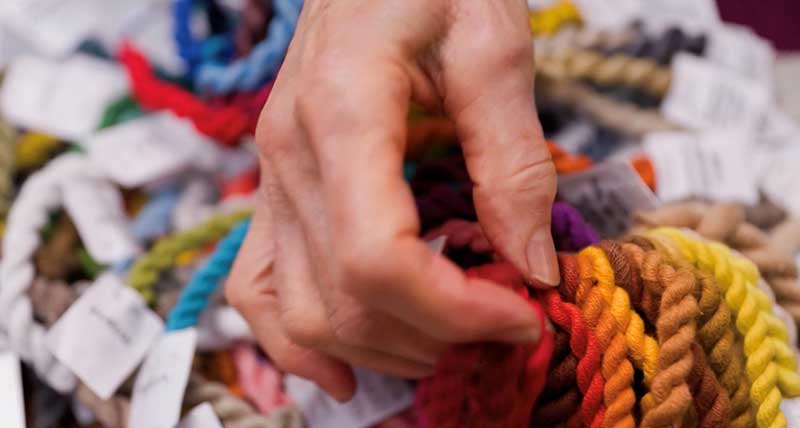
LOOM-INARIES
While finishing her time at Cranbrook, Sina learned of an opening at Skidmore Owings and Merrill, the global architectural firm based in Chicago. They wanted someone from Cranbrook to be one of their color materials librarians in their interiors department. She interviewed in the Chicago office and got the job. So that was her introduction to this industry when she was 22. “It was one of the best jobs of my life. I loved being the librarian and seeing all the different materials people have to work with. I met all the salespeople coming in with their fabric, wood, and marble samples. I’m such a touchy-feely visual person. I think that’s what textile people have in common … touching things and feeling and color. I got to come up with schemes for the senior designers at SOM. It was a dream job, my first job in life.”
“I did a lot of documenting projects, doing color material schedules, and putting together client schemes. I even did a little bit of rug designing. I was doing anything and everything.” Now, as a mentor, Pearson adds, “I always tell students starting their first job that if they want someone to volunteer for something, raise your hand and say, I’ll do whatever you need to be done.”
Pearson’s career at the onset was a tapestry of experiences that seemed to put her in front of industry luminaries for that era. “I worked with Bob Kleinshmidt and Don Powell, super perfectionists, and legendary designers. I was the go-to messenger to pick up things at the showrooms in Chicago and take the wood samples and the lacquer samples back and forth to the wood maker.”
Sina was there at Skidmore for a year when she received a scholarship for independent study at the Royal Academy of Arts, Crafts and Design in Stockholm, Sweden. “I was in Sweden for a year, then returned to New York and got a job at John Carl Warnecke, in their materials library, helping designers source products for their projects. A few years later, I was offered the position of Director of Textiles for the firm Jens Risom. My experience at architectural firms and my knowledge of and passion for textiles made me a candidate for that job. I worked with mills to develop new textile patterns for the collection and did client presentations and sales training.”
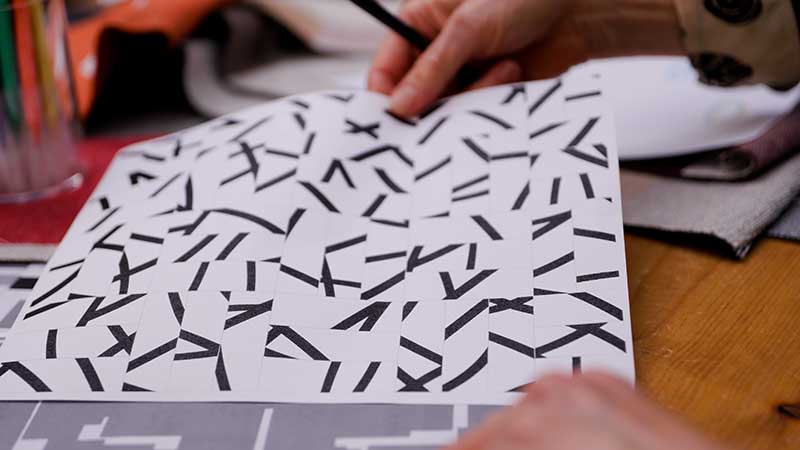
In 1978 Sina went on to work with the iconic designer Ward Bennett to develop his textile collection. She recalls, “He didn’t sit at a desk and draw the furniture he was designing. He would come into the studio and announce he had an idea for a chair. And he would sit in his chair, wrap some cardboard around him, and say, ‘Now, Sina, you have to get the pitch right.’ It was truly a unique and inspired way of creating. I got to work with the best of the best at Ward Bennett.”
“After working several years with Ward, I accepted the position of President of Unika Vaev, the textile division of ICF. It was a tiny textile line but, within a few years, grew to be a significant player in the contract market. If you remember the 1980s to 1990s, it was the golden age of textiles. Designers and clients had healthy budgets. Textiles were beginning to take off with this incredible explosion of design, and all the boutique companies like Deepa, HBF, Sunar Hauserman, and Unika Vaev were coming into their own.”
“Contract textiles had previously been quite plain because making larger-scale or complex patterns required expensive computer changes. With the advent of CAD, we were able to expand the design options. At Unika Vaev, I designed elegant worsted wool patterns that were still durable for contract use and introduced tapestries to the market. That was quite revolutionary at the time.”
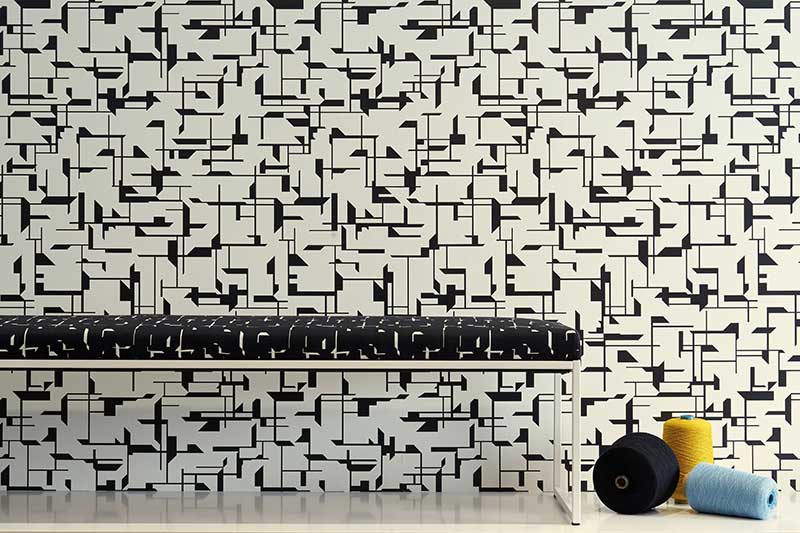
In 1978 Sina went on to work with the iconic designer Ward Bennett to develop his textile collection. She recalls, “He didn’t sit at a desk and draw the furniture he was designing. He would come into the studio and announce he had an idea for a chair. And he would sit in his chair, wrap some cardboard around him, and say, ‘Now, Sina, you have to get the pitch right.’ It was truly a unique and inspired way of creating. I got to work with the best of the best at Ward Bennett.”
“After working several years with Ward, I accepted the position of President of Unika Vaev, the textile division of ICF. It was a tiny textile line but, within a few years, grew to be a significant player in the contract market. If you remember the 1980s to 1990s, it was the golden age of textiles. Designers and clients had healthy budgets. Textiles were beginning to take off with this incredible explosion of design, and all the boutique companies like Deepa, HBF, Sunar Hauserman, and Unika Vaev were coming into their own.”
“Contract textiles had previously been quite plain because making larger-scale or complex patterns required expensive computer changes. With the advent of CAD, we were able to expand the design options. At Unika Vaev, I designed elegant worsted wool patterns that were still durable for contract use and introduced tapestries to the market. That was quite revolutionary at the time.”
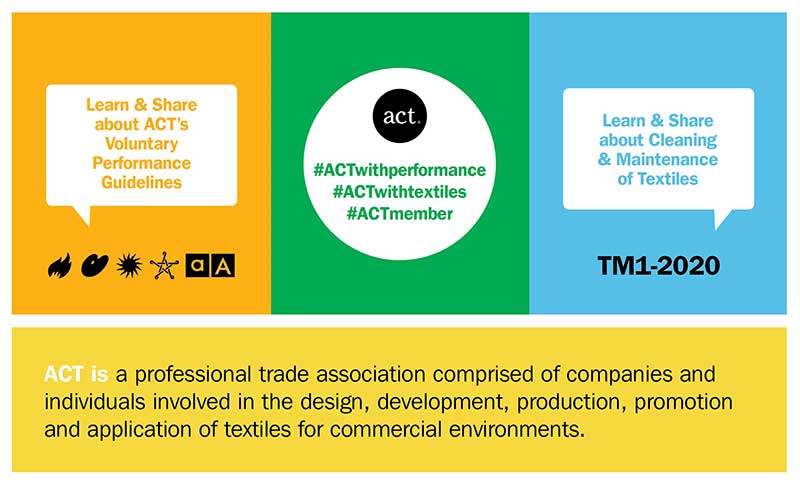
ACT
In 1985 Sina co-founded ACT, the Association for Contract Textiles. In a sense, it began as a mild act of defiance. “In the mid-1980s, fabric companies were not invited to join New York City’s Designer’s Saturday furniture industry trade event. Dick Wagner, VP of Knoll Textiles, and I sent a letter to all the textile companies and asked if they would like to create our own organization to promote contract textiles. Everyone immediately came on board, and ACT soon became the voice of the textile industry. I was on the ACT committee in 1990-92 to create textile durability standards and icons. ACT continues to educate the design community about all things relating to contract textiles and works to update industry standards as needed, and remains the most important organization for those involved in contract textiles.”

COMMON THREADS
“I was at Unika Vaev for ten years before starting Sina Pearson Textiles in 1990. I was fortunate to have Unika Vaev as a teaching platform to run my own business. They had given me a lot of decision-making experience. And when I called my parents and told them I was going to start my own company, they said, ‘We always knew you would.'”
“I had Sina Pearson Textiles for 25 years, and it was a privilege to design the textiles, develop my marketing ideas and tools, and, most of all, meet our clients directly through personal sales calls. My husband worked with me as Sales Manager, so we were truly a Mom and Pop small business known for our high-performance textiles that featured classic textures and unique patterns in fresh and enduring colors. We worked with the best of European and American mills and created hundreds of textiles, many of which won numerous design awards.”
“In 2016, I was ready for a change and sold my business to Momentum Textiles and Wall Covering. Now, at Momentum, I’m working with a team of CAD designers who are true geniuses in the trade. Each year we introduce a collection that explores ideas and concepts that interest me and hopefully speak to our clients. The latest collection, At the Museum, is a love letter to museums and features patterns inspired by visits to my favorite museums.”
Sina (and the team at Momentum Textiles and Wallcovering) have also just created her first digital wallcovering pattern as part of that collection. She only sees more exciting times ahead for her creative designs at Momentum.
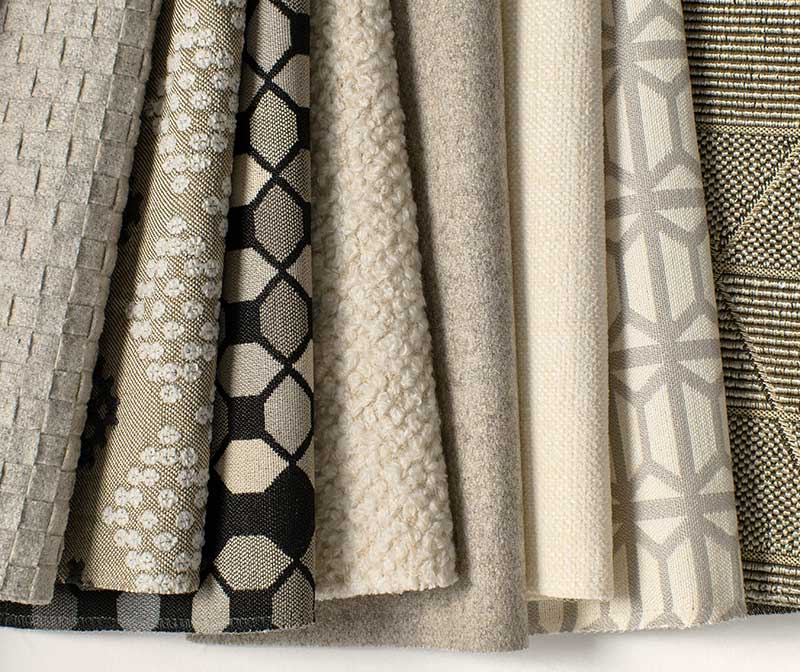
FINISHING
There were some pivotal twists and turns in Sina’s career. “There were a few jobs I had that didn’t work out, but sometimes the best thing can be starting over—a clean, fresh path to a new direction with a new company or new people. I always say to students or young designers, when someone opens the door for you, march right through. Even if it doesn’t work out, it’s okay because you can always move on to another thing, but try that open door.”
Asked if she was doing anything new, Sina responded, “I love having a project and recently bought a slide scanner and have been scanning all my dad’s slides, which is our family’s history, and scanning all my older travel slides. That has made me even more mindful of my past and blessings. I am incredibly grateful for each and every day and all the experiences I have been given.”


